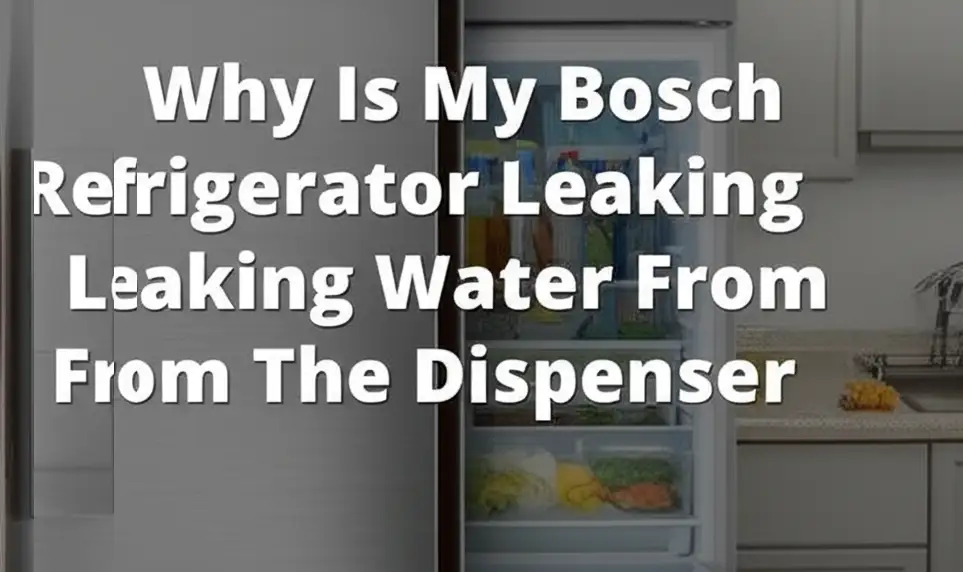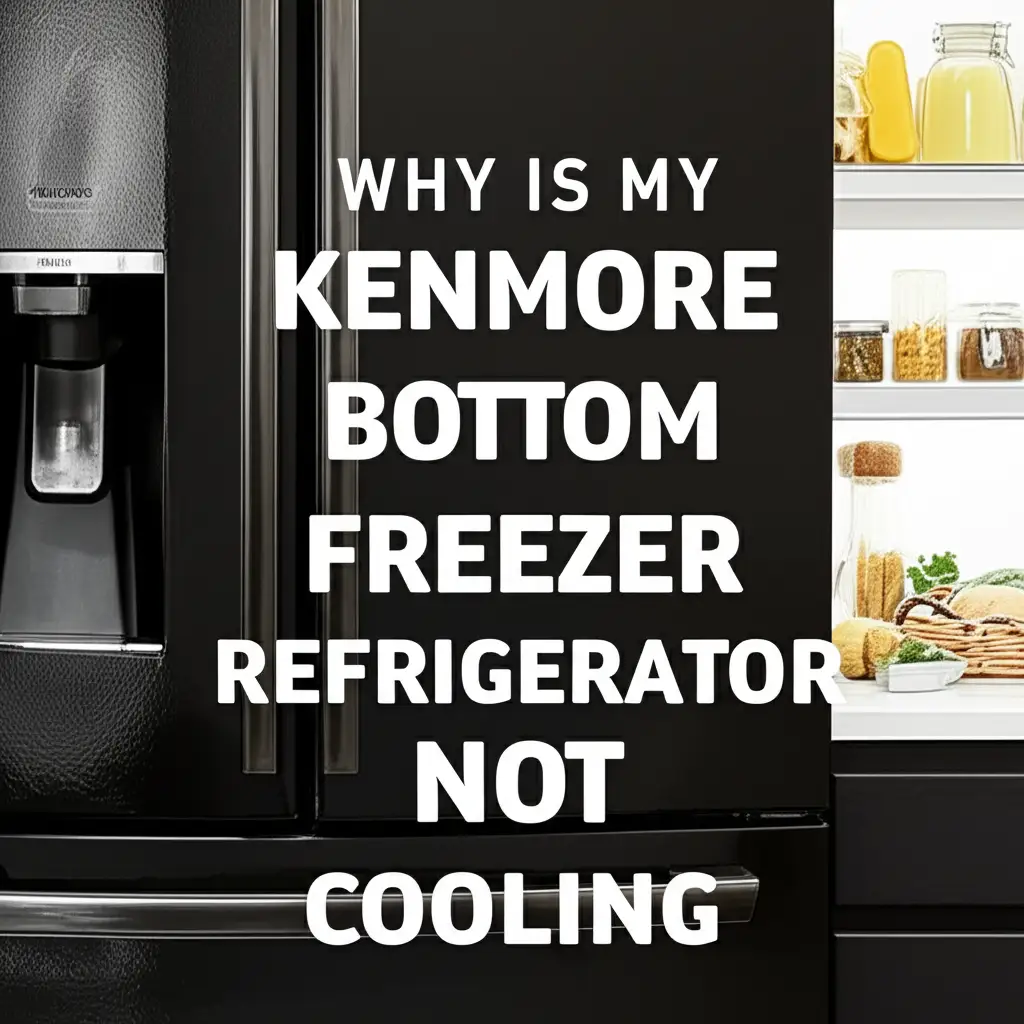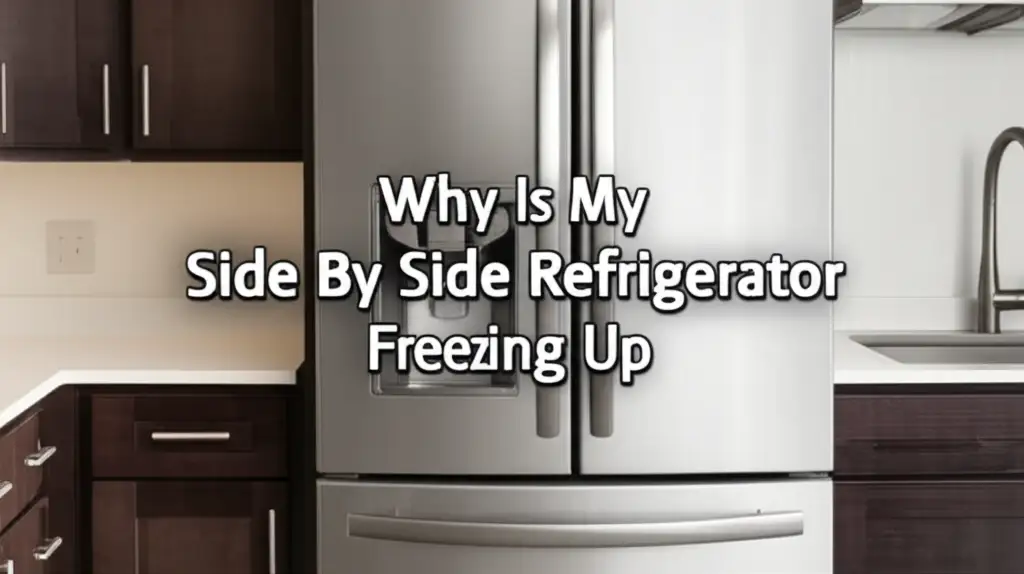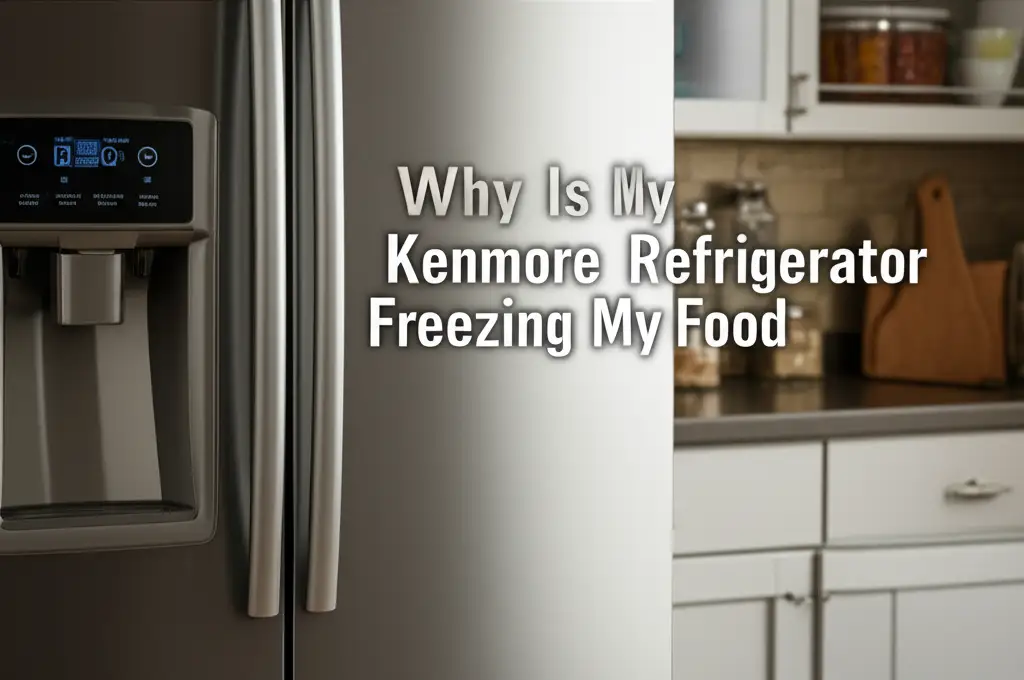· Katria Melrose · Refrigerator Repair · 18 min read
Why Is My Ge Refrigerator Leaking On The Floor
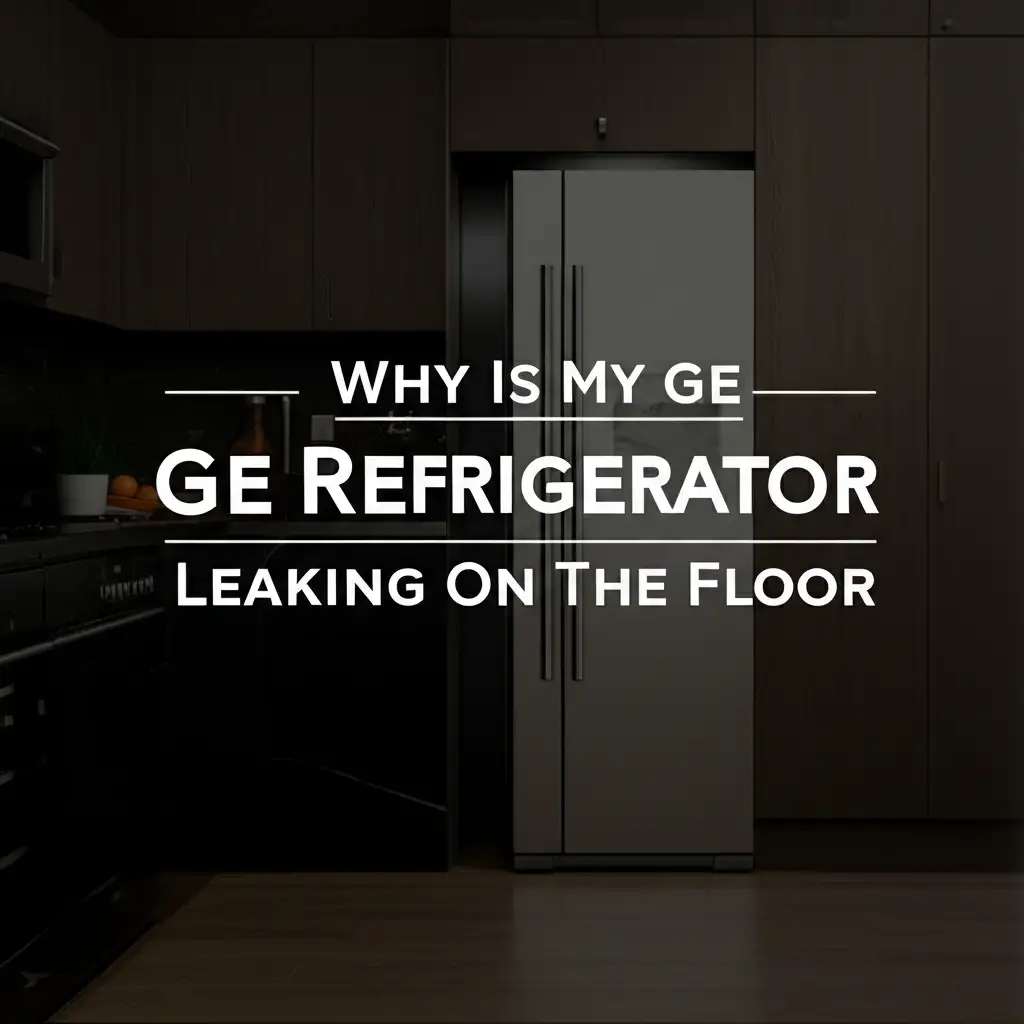
Why Your GE Refrigerator Is Leaking on the Floor
Discovering a puddle of water under your GE refrigerator can feel alarming. It suggests a problem within your appliance. This issue can damage your kitchen floor. It can also pose a slipping hazard. Many people face this frustrating situation. It is a common complaint among refrigerator owners.
This guide will help you understand why your GE refrigerator is leaking on the floor. We will explore the most common causes. These range from simple clogs to part failures. We will also provide clear, actionable steps. You can use these steps to diagnose and fix the leak. My aim is to help you restore your refrigerator’s function. Let’s get your kitchen dry again.
Takeaway
- Check the Defrost Drain: A common cause of GE refrigerator leaks is a clogged defrost drain line. Clear it with hot water or a small brush.
- Inspect Water Connections: Look for loose or damaged water supply lines and filter connections. Tighten or replace them as needed.
- Examine the Drain Pan: Ensure the drain pan is not cracked or overflowing. Clean it regularly.
- Verify Door Seals: Gaps in door seals can cause condensation, leading to leaks. Replace worn seals.
- Level the Refrigerator: An unlevel appliance can prevent proper water drainage. Adjust the leveling feet.
The Problem: Water Under Your GE Refrigerator
Your GE refrigerator is leaking on the floor because water is not draining correctly or escaping its sealed system. This often happens due to a clogged defrost drain, a cracked drain pan, issues with the water supply line or filter, or problems with the ice maker. Addressing these common culprits can typically resolve the leak.
Clogged Defrost Drain Line: A Common Culprit for GE Refrigerator Leaks
One of the most frequent reasons your GE refrigerator is leaking on the floor is a clogged defrost drain line. The defrost drain system removes condensation from the freezer. It directs water to a drain pan under the refrigerator. Over time, food particles or ice can block this drain. This blockage prevents water from flowing away.
When the drain is clogged, water has nowhere to go. It overflows from the drain trough. This water then seeps down and escapes from under the refrigerator. You will notice puddles forming on your kitchen floor. This problem is especially common if you find water pooling inside the freezer compartment. It also appears under the fresh food drawers.
How to Inspect and Clear the Defrost Drain
Inspecting the defrost drain requires some effort. You usually need to access the back panel of your freezer. Start by unplugging your GE refrigerator from the wall outlet. This ensures your safety. Next, empty your freezer. Remove any shelves or drawers blocking the back wall. You will see a panel covering the evaporator coils. Remove this panel.
Once the panel is off, locate the drain hole. It is usually found under the evaporator coils. You might see ice blocking it. You can melt this ice with a hairdryer set on low heat. Never use a sharp object to chip ice, as this can damage components. After the ice melts, use a turkey baster or a small funnel to pour warm water down the drain. This helps flush out any debris. You can also use a pipe cleaner or a long, flexible brush to physically clear the clog. I have found this method very effective in removing stubborn blockages.
Once you have cleared the drain, ensure water flows freely. You can pour a small amount of water down it. It should exit into the drain pan below. If the drain repeatedly clogs, consider pouring a mixture of baking soda and hot water down it regularly. This helps prevent future blockages. Proper maintenance of this drain line is crucial. It keeps your GE refrigerator from leaking. For more details on maintaining your appliance, you can check out general tips on how to clean the refrigerator.
Issues with the Water Filter or Water Line Connection in GE Refrigerators
Another common reason for your GE refrigerator leaking on the floor is a problem with its water filter or the connected water lines. Many GE refrigerators have internal water filters. These filters clean water for the dispenser and ice maker. If this filter is not installed correctly, it can leak. A damaged filter housing can also cause leaks.
The water supply line that brings water to your refrigerator is also a potential source of leaks. These lines can be made of copper or plastic. Over time, plastic lines can become brittle or crack. Copper lines can develop pinhole leaks. Loose connections at the back of the refrigerator or where the line connects to your home’s water supply are also common culprits. A slight vibration can loosen these fittings. This allows water to drip out slowly.
Checking and Replacing Water Components
To inspect these components, first pull your GE refrigerator away from the wall. Unplug it from the power outlet. Turn off the water supply valve leading to the refrigerator. This valve is often located under your sink or behind the refrigerator itself. Once the water is off, inspect the entire length of the water supply line. Look for kinks, cracks, or visible signs of moisture.
Check the connections at both ends of the water line. Ensure they are tight. If you find a loose connection, gently tighten it with a wrench. Do not overtighten, as this can strip the threads. Next, inspect the water filter. If it is a twist-in filter, ensure it is fully seated and locked in place. Remove it and reinsert it if unsure. If it’s an external filter, check its connections. Sometimes, simply replacing the filter can solve a leak. A new filter might seat better. If your GE refrigerator has a side-by-side configuration, replacing the water filter can be a bit specific. You can find detailed instructions on how to replace GE side-by-side refrigerator water filter.
If you see damage to the water line, it needs replacement. Replacement lines are available at most hardware stores. Be sure to get the correct type and length. After making any repairs or replacements, slowly turn the water supply back on. Check for any new leaks immediately. This thorough check will help you determine if your GE refrigerator is leaking on the floor due to water line or filter problems.
Cracked or Overflowing Drain Pan: Why Your GE Refrigerator Leaks
The drain pan, also known as the drip pan or evaporator pan, is located at the bottom of your GE refrigerator. Its purpose is to collect water from the defrost cycle. This water then evaporates naturally due to the heat from the condenser coils. If this pan becomes cracked, water will seep directly onto your floor. A crack, even a small one, can lead to significant puddles over time.
Another issue is an overflowing drain pan. This usually happens if the evaporation process is hindered. Excessive humidity in the kitchen can slow evaporation. Also, if the defrost drain line is partially clogged, water might drip slowly. This allows the pan to fill faster than it can evaporate. When the pan overflows, water escapes from under the refrigerator. The water then spreads across your floor.
Locating and Servicing the Drain Pan
To access the drain pan, you must pull your GE refrigerator out from the wall. Make sure it is unplugged for safety. The drain pan is typically located at the bottom, near the compressor. It is often a shallow, wide tray. You may need to remove a front or rear grille to slide it out. Some models require removing a few screws.
Once you have access to the drain pan, inspect it carefully for cracks. Shine a flashlight on it. Look for any hairline fractures or chips. If you find a crack, the pan must be replaced. Replacement parts are usually brand-specific. Make sure to order the correct one for your GE model. If the pan is full but not cracked, empty it. Clean it thoroughly with soap and water. Remove any debris or mold growth. This improves evaporation.
Ensure the pan is seated correctly after cleaning or replacing. It must be level to collect water effectively. Remember that maintaining a clear space around the back of your refrigerator helps air circulate. This aids in the evaporation process from the drain pan. For tips on how to properly clean the area, you might find useful information on how to clean under a refrigerator. If you have a GE refrigerator leaking on the floor, the drain pan is a critical component to check.
Ice Maker Problems Leading to Water on the Floor from Your GE Refrigerator
The ice maker system in your GE refrigerator is a common source of leaks. It involves several components that can fail. The fill tube, which brings water to the ice maker, can freeze or crack. When this tube freezes, water backs up and overflows. If it cracks, water drips out. The water valve that supplies the ice maker can also stick open or malfunction. This leads to a continuous trickle of water.
The ice maker itself can have issues. A clogged or faulty ice chute can cause ice to back up. When the ice melts, the water has nowhere to go. It then overflows into the freezer compartment. From there, it can make its way down to the floor. Sometimes, the problem is as simple as a misaligned ice tray. This causes water to spill during the filling cycle. If you notice a leak specifically when the ice maker is active, this area needs your immediate attention.
Troubleshooting Your GE Ice Maker
To troubleshoot your ice maker, first unplug your GE refrigerator. This is vital for safety. Open the freezer door. Visually inspect the ice maker unit. Look for any signs of ice buildup around the fill tube. This tube is usually a small, thin plastic line. It enters the ice maker assembly. If you see ice, use a hairdryer on a low setting to melt it. Do not use sharp objects.
Next, check the water supply line leading to the ice maker. Ensure it is not kinked or visibly damaged. If you suspect the water inlet valve, you might hear a constant humming sound. This indicates the valve is not closing properly. A faulty valve needs replacement. This is usually a job for a professional. You can often find detailed guides specific to your model for troubleshooting the ice maker. For example, if your GE refrigerator is leaking water from the ice maker, that’s a direct symptom you’re addressing.
Finally, confirm the ice bucket and tray are correctly positioned. An off-kilter tray can cause spills. If your GE refrigerator is leaking water from the ice maker, addressing these points will help. It’s a precise system. Each part must work correctly to prevent leaks. My experience has shown that many ice maker leaks are due to ice blockages or simple misalignments. For more specific issues, consider checking an article like Why is my GE refrigerator leaking water from the ice maker?
Condensation and Door Seal Issues in GE Refrigerators
Condensation inside your GE refrigerator can also lead to water leaking on the floor. This happens when warm, humid air enters the refrigerator and freezer compartments. When this warm air meets the cold interior surfaces, it forms condensation. This is similar to how water droplets form on a cold glass on a hot day. If too much condensation accumulates, it can overflow the internal channels. It then drips down to the bottom of the unit. From there, it escapes onto the floor.
The primary cause of excessive condensation is a faulty door seal. The door seals, or gaskets, are the rubber strips around the edges of the refrigerator and freezer doors. Their job is to create an airtight seal. This seal keeps the cold air inside and the warm air out. Over time, these seals can become brittle, cracked, or loose. They may also simply flatten from use. A damaged seal allows warm air to constantly seep into the refrigerator. This increases the amount of condensation formed.
Inspecting and Maintaining Door Seals
To check your GE refrigerator’s door seals, first open both doors. Examine the gaskets carefully. Look for any tears, cracks, or hard spots. Run your hand along the seals. They should feel soft and pliable. A simple test involves closing the door on a dollar bill or a piece of paper. If you can pull the paper out easily, the seal is weak at that spot. Repeat this test around the entire perimeter of both doors.
If you find a faulty seal, it needs replacement. You can often purchase new gaskets online or from appliance parts stores. Replacing them is usually straightforward. It involves pulling off the old seal and pressing on the new one. Ensure the new seal is properly seated all the way around. Another important step is to keep the door seals clean. Wipe them down regularly with warm, soapy water. This removes any food residue or stickiness. Dirt can prevent a proper seal.
Sometimes, simply cleaning a sticky seal can restore its effectiveness. If the leak persists after checking the seals, ensure the refrigerator is not overstuffed. Overfilling can block vents. It also prevents doors from closing completely. This can lead to condensation issues. Maintaining good door seals is key to preventing water from your GE refrigerator leaking on the floor.
GE Refrigerator Leaks from a Malfunctioning Water Inlet Valve
The water inlet valve controls the flow of water into your GE refrigerator. This valve is typically located at the back of the unit. It connects the household water supply line to the refrigerator’s internal water lines. These internal lines feed both the water dispenser and the ice maker. If this valve malfunctions, it can become a significant source of water leaks.
A common issue with water inlet valves is that they can stick open. This causes water to flow continuously or trickle, even when it’s not needed. This constant flow can overwhelm the internal drainage system. It leads to water pooling inside the refrigerator or leaking onto the floor. The valve itself might also develop a crack in its housing. This can happen due to age, freezing temperatures, or wear and tear. Even a small crack will allow water to escape.
Diagnosing and Replacing the Water Inlet Valve
To inspect the water inlet valve, you first need to pull your GE refrigerator away from the wall. Unplug it from the power outlet. Turn off the main water supply to the refrigerator. The valve is usually visible at the lower back of the unit. It often has a solenoid coil and several water lines connected to it. Look for any visible signs of water dripping from the valve itself or around its connections.
Sometimes, you might hear a constant buzzing or humming sound from the back of the refrigerator. This can indicate a stuck or failing solenoid inside the valve. If you suspect the valve is leaking, you will need to replace it. This is generally a more complex repair. It often involves disconnecting water lines and electrical connections. If you are not comfortable with plumbing or electrical work, it is best to call a qualified appliance technician.
Before replacing, double-check all connections leading to and from the valve. Ensure they are tight and free of corrosion. A loose fitting might be the problem, not the valve itself. If the valve is indeed the culprit, sourcing the correct replacement part is crucial. Make sure it matches your specific GE refrigerator model number. A functioning water inlet valve is essential. It prevents your GE refrigerator from leaking on the floor. It ensures controlled water delivery to your ice maker and dispenser.
Unlevel Refrigerator or Damaged Flooring: Indirect GE Leak Causes
Sometimes, the water on your floor isn’t from a direct component failure. An unlevel GE refrigerator can cause drainage problems. Refrigerators are designed to tilt slightly backward. This allows defrost water to flow correctly into the drain pan. If your refrigerator is tilted forward or to the side, water might not reach the drain. Instead, it can pool inside the unit or spill out onto the floor.
Additionally, while not a refrigerator fault, uneven or damaged flooring can make a minor leak appear worse. It can also cause water to spread further. A floor that slopes away from the drain pan’s proper drainage path can redirect water. Over time, constant dampness from even a small leak can damage your flooring. This can create dips or swells that further complicate water flow. Addressing the refrigerator’s level is a straightforward fix. It can prevent significant headaches.
How to Check and Adjust Refrigerator Leveling
To check if your GE refrigerator is level, you will need a spirit level. Place the level on top of the refrigerator. Check it front-to-back and side-to-side. Most refrigerators have adjustable leveling feet at the bottom corners. You might need to tilt the refrigerator back slightly to access them. Use a wrench or pliers to turn the feet. Turn them clockwise to raise that corner and counter-clockwise to lower it.
Adjust the feet until the refrigerator is perfectly level from side to side. For the front-to-back tilt, most manufacturers recommend a slight backward tilt. This encourages the doors to close properly. It also helps with water drainage. Check your GE refrigerator’s manual for its specific tilt recommendation. Usually, a slight raise of the front feet is sufficient. Once adjusted, open and close the doors to ensure they seal well.
After leveling, observe your refrigerator for a few days. See if the water leak stops. If the floor under your refrigerator shows signs of damage or unevenness, consider addressing that as well. Even minor dips can pool water. For general maintenance and to prevent issues, remember to pull your refrigerator out regularly. This allows you to inspect the area around it. It also helps with cleaning. This simple step often makes a big difference in preventing a GE refrigerator from leaking on the floor. A stable, level base is crucial for proper operation. Also, understanding why a side-by-side refrigerator might leak water on the floor can provide more context on general leak issues. You can find out more by reading Why does my side-by-side refrigerator leak water on the floor?.
FAQ Section
Why does my GE refrigerator leak water when I open the door?
If your GE refrigerator leaks water when the door opens, it likely indicates a problem with the defrost drain. Warm air entering the fridge melts ice quickly. If the drain is clogged, this water has nowhere to go. It then overflows and leaks out. Check the drain and clear any blockages.
Can a clogged air vent cause a GE refrigerator to leak?
Yes, a clogged air vent can indirectly cause a GE refrigerator to leak. Blocked vents can disrupt proper airflow, leading to excessive frost buildup. When this frost melts during the defrost cycle, it produces more water than the drain system can handle. This can result in an overflow and a leak.
How often should I clean the drain pan in my GE refrigerator?
You should inspect and clean the drain pan in your GE refrigerator at least once a year. This prevents buildup of debris, mold, and mildew. Regular cleaning ensures the water evaporates efficiently. It also stops the pan from overflowing.
Is it normal for some water to be under my GE refrigerator after defrosting?
No, it is not normal for water to be under your GE refrigerator after defrosting. The defrost water should flow through the drain line into the drain pan. It should then evaporate. Any water on the floor indicates a problem in the drainage system or another component failure.
Can food debris cause my GE refrigerator to leak?
Yes, food debris can definitely cause your GE refrigerator to leak. Small food particles can fall into the defrost drain line. They create a blockage. This prevents water from draining properly. It causes the water to overflow and leak onto the floor. Regular cleaning helps prevent this.
What should I do if my GE refrigerator still leaks after trying these fixes?
If your GE refrigerator still leaks after trying these fixes, the problem might be more complex. It could involve a damaged evaporator coil or a faulty compressor. These issues usually require professional diagnosis and repair. Contact a certified appliance technician for assistance.
Conclusion
Finding your GE refrigerator leaking on the floor is a frustrating experience. However, most leaks have common causes that you can often fix yourself. We have covered the main culprits. These include a clogged defrost drain, issues with the water filter or supply line, a cracked drain pan, ice maker problems, and faulty door seals. Even an unlevel refrigerator can be the cause.
By systematically checking each potential source, you can likely identify and resolve the leak. Remember to always unplug your GE refrigerator and turn off the water supply before attempting any inspection or repair. My goal was to provide clear steps. This lets you approach the problem with confidence. If you’ve gone through these steps and the leak persists, it’s wise to call a professional appliance technician. They have the tools and expertise for more complex diagnostics. Don’t let a leaky GE refrigerator get you down; take action today and restore your kitchen’s dryness.
- GE refrigerator leak
- refrigerator water leak
- appliance troubleshooting
- refrigerator repair
- GE appliance maintenance


